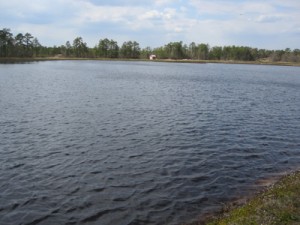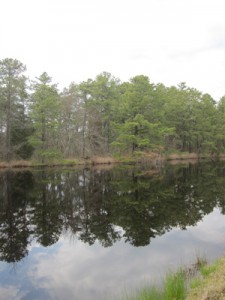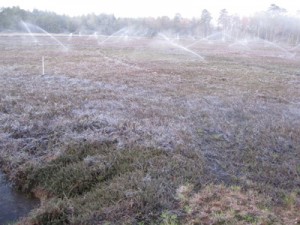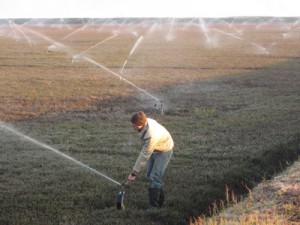It’s been a focused week at Pine Island Cranberry as our teams finish the planting at the Oswego renovation and work on the annual tasks of removing the winter flood and preparing for frost.
We’ve said it so often you can probably recite it with us by now: good water management is absolutely critical to growing cranberries. Growers rely on a clean, abundant supply to maintain the bogs year round. The key question, as everyone here knows by heart, is “Where is the water coming from, and where do you want it to go?” For every acre of vines, cranberries require ten acres of water. Therefore it is another one of Pine Island’s top priorities to make sure our surrounding environment is as protected as possible. As we said last year about removing the winter flood, good water management is not only the crucial part of our work here at Pine Island – it’s essential to the balance of agriculture production with the Pinelands environment.
The Cohansey-Kirkwood aquifers lie beneath the surface of the Pinelands, containing enough water to cover the state of New Jersey six feet deep. Most of the water in the aquifer comes from rain, which also helps fill our reservoirs. When we flood the bogs for the winter, we direct the surface water (using damns, canals, and ditches) to the bogs at the highest elevations. Gravity causes water to flow downhill, so, once the bogs at higher elevations are flooded, we can easily direct it downhill to bogs at the lower levels.
When the warmer weather sets in, the bogs are drained so that the dormant vines awaken for the growing season; while cranberries are most frequently harvested using the “wet pick” method, they do not actually grow under water and thus need to go through the same growing cycle as any other fruit crop. The process, which we call “dumping water”, is deceptively simple: a team member takes a gate hook and removes the boards that have been placed across the gate in the bog. (The boards are removed in a specific pattern to work with gravity and the natural flow of the water.) Once the boards have been pulled and placed on top of the gate, the water moves to the next bog along the ditches. This water returns to the reservoirs and canals in order to be reused for the next part of the cycle. Our team has targeted April 25th to be the end date for this.
The next stage will be frost protection. Typically, a cranberry bog is built at a lower level than the land immediately surrounding it and the bog temperature can drop ten to fifteen degrees lower than the uplands. These conditions make monitoring bog temperature a top priority once the winter water comes off, which is why installing sprinklers quickly and efficiently is so important. Right now our team is doing whatever it takes to get them all installed before the temperature drops at night.
Ultimately, it is our Pine Island team’s dedication to our land and our surrounding environment that makes us what we are: growers dedicated to doing what we do better every day.







